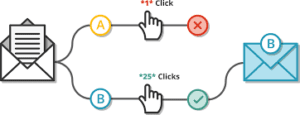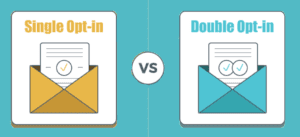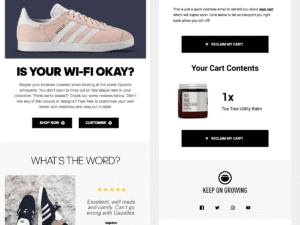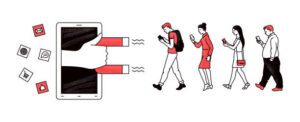If you run an eCommerce company, an online business or an online store, and you’re not using email marketing as a tool to generate sales, then you’re leaving money on the table
In this post, I will discuss the best email marketing practice of ecommerce stores in 2022
This includes the kind of email to send, why these emails are important & when to send these emails.
- A/B Test Your Content
- Use double opt-in email sign-up
- Setup Abandoned cart email flows
- Use lead magnets to capture more subscribers
- Segment your email list
- Send a welcome email
- Use Cross-selling emails to generate more revenue
Before I start breaking explaining this best practices, I to encourage you to do one thing: after you read this, stop browsing the internet for solutions.
Stop reading my or other’s blog posts, and start implementing some of the solutions you’ve found.
Email marketing best practice we will be covering in this post includes, email marketing practices approved by HubSpot, Salesforce, Klaviyo & Shopify
Ready for the best email marketing practices in 2022? Ones that will actually generate sales, increase repeat order and turn strangers into customer? Let’s get moving.
-
A/B Test Your Content

What does A/B Testing Email Campaign Mean?
A/b email marketing campaigns is the act of sending different variants of content to different segments of your email list with the end of goal of finding out which email marketing campaign performs best.
Why You Should Split Test Your Email Campaigns
According to reports performed by HubSpot, Litmus and Klaviyo more than 39% of ecommerce brands do not split test their email campaigns.
Split testing your email marketing campaigns gives you an edge over brands in your industry that don’t test their emails
By failing to run different A/B tests, they’re unable to realize the best email marketing practice that will work for their brand.
However, if you run A/B tests from time to time, you can ensure that your emails are performing at their best.
What should You A/b test?
With the help of email marketing tools like Klaviyo, you can a/b test different aspect of your email marketing campaigns.
A few factors you can a/b test are:
- Subject line
- Length
- Call to action
- Tone
- Email Copy
- Text-based or Image-based
- Button vs Text
- Discount or No Discount
With that said, start testing your email campaigns today.
Test some of the stuff I listed above, set it up as an A/B test, click send, and see what happens.
You may see a boost in sales, an increase in open rate or click-through rate. So let’s get to the next best practice.
-
Use Double Opt-in Email Sign-up

What does Double Opt-in Mean?
A double opt-in occurs when a website visitor subscribes to an email list and then, a confirmation email is sent out to the user.
The email that’s being sent out contains a link that automatically verifies their email address once they click on it.
Is Double Opt-in Important?
Is double email opt-in important? The short answer is yes!
As an ecommerce brand, by using double opt-in not, you drastically reduce the chance of your email list or email campaigns being filled with spam or sent to spam email addresses.
By using double opt-ins, any bots that try to join to your newsletter won’t be able to join because they bots can’t confirm their email addresses.
Another reason why double opt-in is a good email marketing practice is that it protects your sender reputation, by protecting your sender reputation, your emails are more likely to land in the inbox instead of spam folder.
-
Setup Abandoned Cart Email Flows

What is an Abandoned Cart Email Flow?
Is Abandoned Cart Email Campaigns Important?
Setting up abandoned cart email campaigns is very important, this is because with an abandoned cart email can help you get visitors who abandoned their cart to complete the checkout.
Let’s say that you currently make $10,000 per month with your online product.
If you recover just 5% of the sales you lose from abandoned carts (using a 75% cart abandonment rate), that means you could be making an extra $24,000 per year, or about 2.5 extra months of revenue
Related: How We Increased Abandonment email Revenue by 4.75x in 2 Weeks
This means that setting up an abandoned cart email campaign is one of the best email marketing best practices in 2022
-
Use Lead Magnets to Capture More Subscribers

Getting or capturing email subscribers is important because it is the foundation of email marketing, this is because without an email list, you don’t have an audience & without an audience nobody is going to buy your product.
List of Lead Magnet Ideas of eCommerce Brands are:
- Free discounts
- Free shipping;
- Get a Free gift with the first order;
- A guide on how to use your product;
- Guide to saving money when shopping for X;
- Membership (make your customers feel special by inviting them to your VIP group
- Educational material related to the need they will solve with your product.
-
Segment Your Email List

What does it mean to segment an email list?
Top 2 ways you can segment your list:
Location: One of the easiest ways to segment your email list is through location.
Let’s say you run an eCommerce store and 30% of your customers are based in Japan, another 30% is based in Lithuania and 60% in US.
From the above description, you’ll notice that most of your customer reside in countries with different, 4th April in Canada will be 6th in Japan.
Segmenting your email list based on location will increase your sales, because customers will receive your emails in their timezone, when they’re most likely to buy.
Behavior Based Email List Segmentation
This involves segmenting your email list based on a subscriber’s behavior.
How often do they open your emails? How many products do they add to cart on an average visit?
Do they visit and checkout immediately, like an impulse buyer? Or do they visit a few times in a week, adding the same items to their shopping cart then canceling it, like a nervous buyer?
Read: Shopify Email Marketing vs Mailchimp Which is Better?
-
Send a Welcome Email

Why are welcome emails important?
-
Use Cross-selling Emails to Generate More Revenue
A cross-selling email, is an email sent to a customer who recently bought something, the email suggest other items in your product catalog based on what the customer bought.
According to Privy in your cross-sell emails, you should present your suggested products using the following language:
- “Complete the look”
- “People also bought”
- “You may also like”
- “Protect your purchase
Why are cross-selling/upsell emails so important?
When is a good time to send an Upsell email?
A good time to send an upsell/cross-selling email is 10 minutes after a customer places an order.
What is the Difference between Upselling & Cross-selling email?
The goal of a cross-selling email is to get a customer to something that will compliment what they just bought, while the goal of an upsell email to get the customer to buy something that’s a more expensive or upgraded version.
With that said, this brings us to the end.
Put this 7 email marketing practices for eCommerce into action and experience the magic